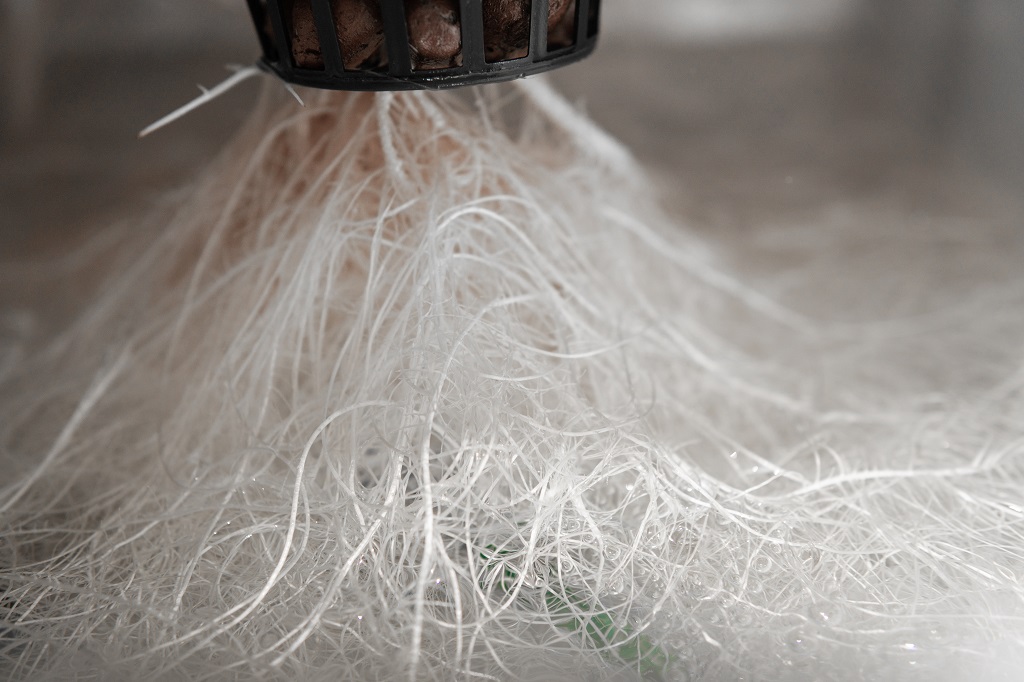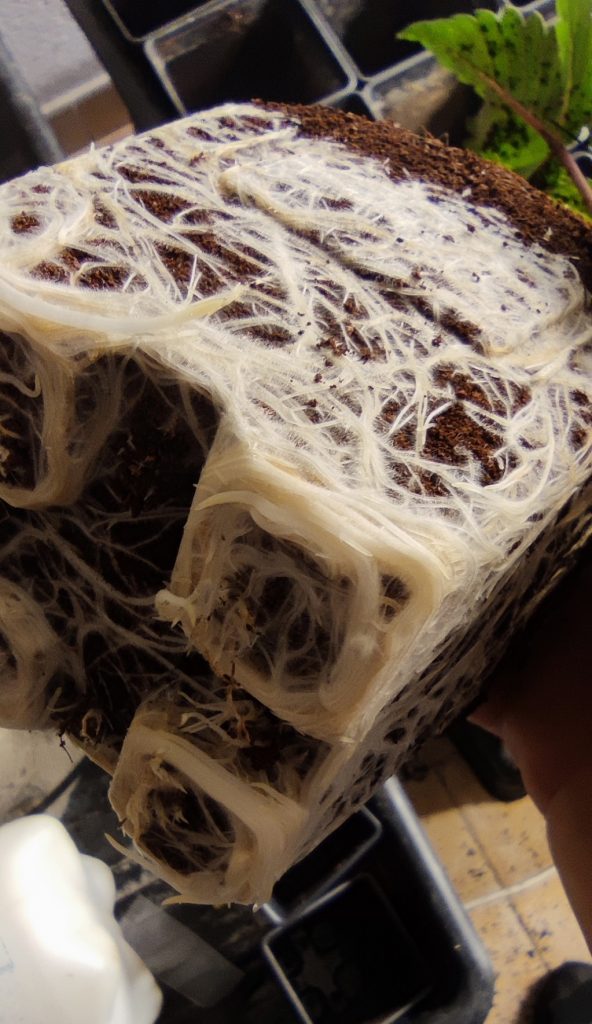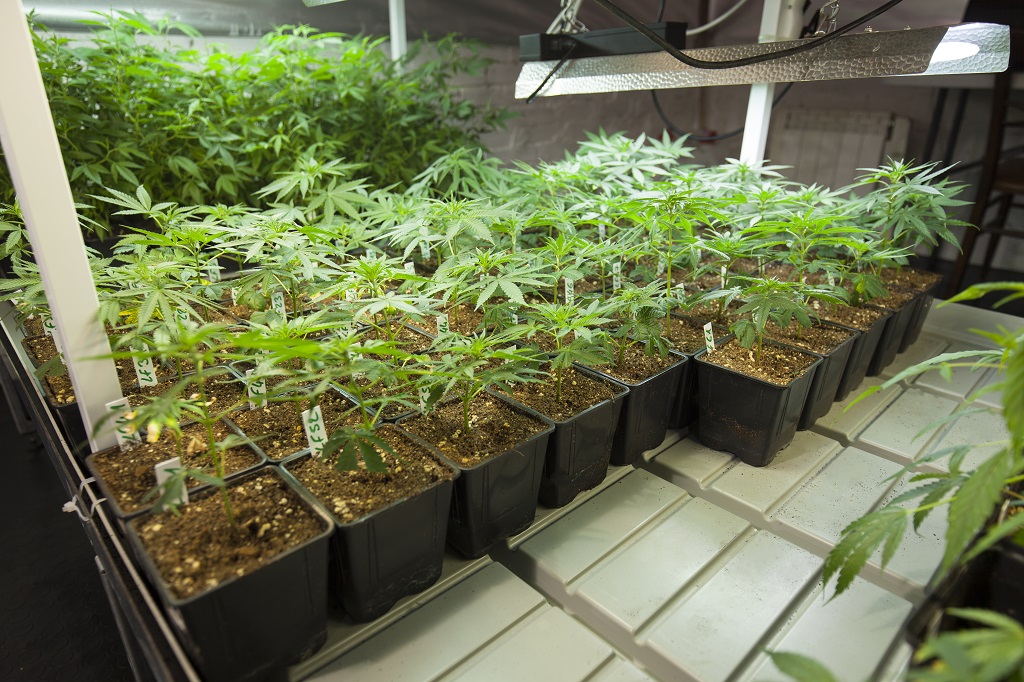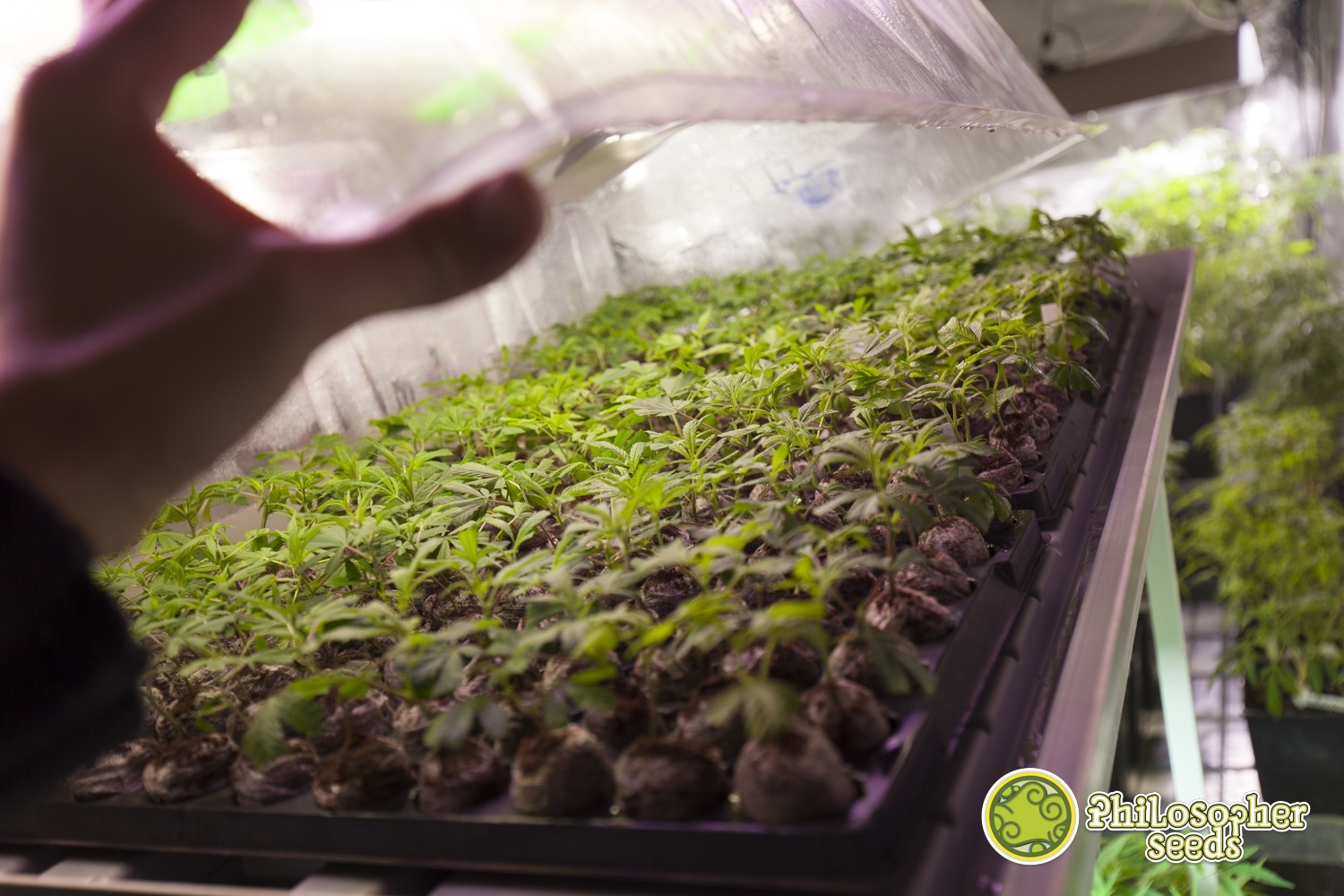How to make rooting compounds for cannabis
List of contents
Rooting or the root development phase is crucial to subsequently achieve abundant and lush vegetative growth, whether we are talking about plants coming from seed, cuttings or clones. For this reason, the use of rooting or root growth enhancers is very common among all kinds of growers, who want to ensure the best conditions for their seedlings or cuttings, something very important in order to get the maximum possible crop yield at harvest time.
Well, today we are going to show you several recipes so that you can produce your own homemade rooting agent quickly and easily and, above all, achieve great results. In this way, we are supplementing our plants with 100% natural and environmentally friendly products, made at home and with a minimal carbon footprint, something very important to take into account in these times we live in.

The roots of cannabis plants
Although we don't usually get to see the underground part of the plant, the roots that grow there are a vital part of its development, as thanks to them, water and nutrients can be absorbed and transported to the aerial part of the plant, which grows out of the soil and is responsible for photosynthesis. Thanks to the fine capillaries of the roots and the symbiosis they achieve with various micro-organisms, the root system can assimilate the nutrients contained in the soil and transport them to the stems and leaves via the xylem.
However, the roots also provide the necessary physical support for the plants, anchoring them in the substrate, as well as improving the soil structure and resistance to, for example, heavy rainfall, thus reducing erosion caused by runoff or wind. In the specific case of cannabis, a strong and healthy root system is an essential first step for a successful and productive harvest, because often the aerial or photosynthetic part of the plant is a reflection of its underground part, and if there is any development problem in the latter, it will be reflected in the overall development of the plant.

Rooting compounds for plants: what are they and what do they do?
Rooting agents are usually products rich in plant hormones or phytohormones specially formulated to promote the growth and protection of the root system of plants. However, these products do not only contain hormones but are often also rich in amino acids, proteins, enzymes, minerals, vitamins and antioxidants, all of which help not only to protect the roots from various threats (pathogenic fungi, for example) but also to stimulate the growth of main and secondary roots. In fact, there are also some rooting products without hormones but rich in other compounds or even microbial life, so the range of formulations can be really wide.
Some of these products are especially beneficial for the plant to develop roots, such as rooting hormones often used in clones or rooting boosters intended for use after transplanting, for example. Some others, as we will see below, are really general growth stimulants, both underground and above ground, meaning they are usually used throughout the growth cycle of the plant, that is, from the time it germinates until it starts to show signs of flowering.
How to make marijuana cuttings
Cannabis cuttings are an easy and efficient way to ensure the quality standard demanded by each grower. Taking clones is an easy process that leads to top grade, uniform crops, which is what many growers want. On this article you'll learn, step by step, how to take cuttings easily and successfully.
Types of rooting compounds
Normally, when it comes to preparing homemade rooting products, some type of sprouted seed or grain is used to make a tea that will later be ground up using a food blender and diluted in water before being used. Logically, the properties of each tea will depend largely on the seed or grain used, so it is worth paying attention to what each one provides in order to choose the best time to prepare and use each tea (in case you want to prepare several). As you will see, most of these preparations are for use via irrigation, diluting the tea in water and watering the substrate with it (whether it is the rooting medium or the growing medium itself). However, we also present some options that you can apply directly to the base of the clone's stems to facilitate subsequent rooting.

Another interesting option is to mix several types of sprouted seeds to prepare a tea combining the properties of them all, for example, combining a seed rich in auxins with another rich in gibberellins, which will result in an excellent stimulator of the overall development of the plant. For these cases, we recommend germinating the seeds separately and mixing them together during the grinding process, although this will be discussed in detail at the end of the article. For the moment, and although there are many more options, let's take a look at the main characteristics of some of the most commonly used seeds and grains to prepare a homemade rooting agent:
Lentil tea (and other legumes):
Very rich in auxins, legume teas are one of the most widely used options for making rooting agents containing high concentrations of this phytohormone. Probably the best-known auxin when it comes to formulating rooting agents is indole acetic acid (IAA), which is present in legumes but also in young willow shoots, kelp and coconut water. Although beans, chickpeas or other legumes can also be used, lentils are usually the most commonly used due to their short germination period and high phosphorus content.
Barley tea:
Sprouted barley grains are rich in gibberellins and enzymes, as well as containing various nutrients, vitamins and amino acids. While gibberellins will act as a general growth enhancer for the plant, this type of tea is especially useful in ensuring an abundance of enzymes in the substrate, which facilitates both root development and nutrient assimilation, as well as protecting the root system from attack by pathogenic fungi such as fusarium.
Coffee grounds tea:
In addition to being rich in nitrogen and potassium, coffee beans can help the development of roots in small seedlings and cuttings, making them a great stimulator for the growth phase of plants. Once the tea has been made, we can also use the waste material in our compost bin or to keep snails and slugs away.

Wheat or soya tea:
Soya bean or wheat grain teas usually contain high concentrations of various phytohormones such as IAA, PAA, GA or ABA that help in the development of the root system as well as stems and leaves. They are therefore an excellent alternative when it comes to preparing homemade rooting compounds, easy to prepare and use and very beneficial for the plants.
Cinnamon tea:
Cinnamon is widely used in the formulation of plant protection products to combat pathogenic fungi, which can attack both the aerial part of the plant and its root system. It is therefore particularly useful for making rooting products, as its antifungal properties help to keep such fearsome fungi as fusarium and pythium at bay.
Compost tea:
Although it is often used as a growth stimulator rather than as a rooting agent, the truth is that compost tea can help seedlings and cuttings get off to a perfect start thanks to its high content of micro and macronutrients, humic and fulvic acids and, especially in our case, beneficial microbial life for root development. It is not surprising, therefore, that compost tea is often mixed with some other type of tea to ensure complete and balanced nutrition, or that they are used alternately, with one watering of each.
Willow tea:
Willow tea is based on salicylic acid and is an effective rooting agent, especially when the clones are soaked in the tea prior to planting in the chosen rooting medium. This is made by simply collecting young willow shoots, breaking them up into small pieces, covering them in boiling water and letting the tea steep for a minimum of 24 hours at room temperature. After that, we filter the mixture and dip the base of the cutting (the part that will be buried) in the resulting tea before planting it in the rooting medium.

Aloe Vera:
In a similar way to cinnamon, applying aloe vera gel to the base of the clones will facilitate rooting and protect them from infections caused by pathogenic fungi or bacteria. To collect the gel, simply cut a leaf lengthwise and scrape the inside of the leaf with a spoon. Once collected, it is applied as if it were a commercial rooting hormone, applying a thin layer on the base of the cutting.
How to make a root stimulator for cannabis
Here we are going to show you how to prepare these teas quickly and easily. We recommend using seeds or grains that come from organic cultivation, as this ensures that they do not contain unwanted substances such as pesticides or heavy metals. Get the necessary material ready beforehand:
- 30g of seeds or grains
- 1 fine sieve
- 1 glass jar
- 1 cheesecloth and rubber band
- Clean water
- Blender or food processor
- Start by putting the seeds or grains in the sieve and rinsing well with clean water.
- Once clean, leave them to soak in water overnight.
- The next day, strain the seeds, rinse them again and put them in the jar, cover the opening with the cheesecloth secured with the rubber band. Leave the jar in a horizontal position to increase surface area.
- From this moment onwards, repeat step 3 once a day until the seeds have germinated.
- Once sprouted, mix them with about 250ml of clean water and blend until a homogeneous liquid is obtained.
- Strain the liquid to remove the pulp resulting from the blending (which we can leave in the composter or spread on top of the substrate), mix it with 10L of water and our rooting tea is ready to apply!
As we have mentioned, you can complement your tea with other types of seeds or products such as nettle flour, kelp flour, comfrey and many more. We can only encourage you to try and make your own recipe, the truth is that the use of this type of products is reflected in the results of the grow... you'll be able to see the difference clearly!
Happy harvests!






